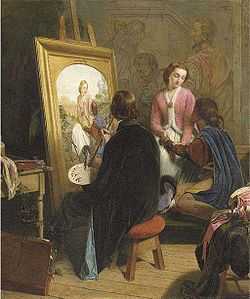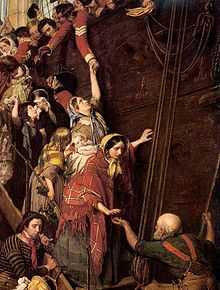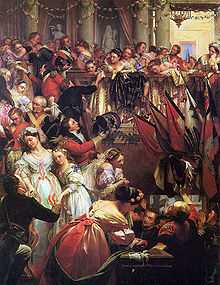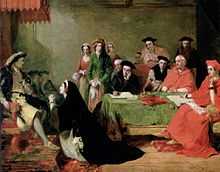Henry Nelson O'Neil

Henry Nelson O'Neil (1817, Russia - 1880) was an historical genre painter and minor Victorian writer. He worked primarily with historical and literary subjects, but his best-known paintings dealt with the Indian Mutiny. Eastward, Ho!, dated August 1857 but exhibited the following year, depicts the British troops embarking for India. A second painting, Home Again, (1859) shows the troops returning to England. He also had popular successes with romantic scenes portraying the deaths of Mozart and Raphael, depicted as though mentally transported to heaven by their own religious art. In The Last Moments of Mozart the dying composer listens to singers performing part of his Requiem. The Last Moments of Raphael shows the painter contemplating the unseen figure of Christ in his Transfiguration.
O'Neil was a member of The Clique, a group of artists in the 1840s who, like the later Pre-Raphaelite Brotherhood, met regularly to discuss and criticize one another's works. The other members of The Clique were Augustus Egg, Alfred Elmore, Richard Dadd, William Powell Frith, John Phillip, Edward Matthew Ward.
Most of the Clique opposed the Pre-Raphaelites, but O'Neil was the most virulent in his condemnation of the movement, attacking them in both paintings and writings. These included his futuristic fantasy 2000 Years Hence, which portrayed Britain in the year 3967 as a frozen wasteland excavated by an archaeologist from New Zealand. The archaeologist uncovers evidence of the decline of British culture in the nineteenth century, allowing O'Neil to vent his own distinctly reactionary political views, predicting dire consequences of the Reform Act 1867.
Gallery
| Wikimedia Commons has media related to Henry Nelson O'Neil. |
-

Eastward Ho! (1858)
-

Before Waterloo (1868)
-

The Letter Writer (1860)
-

The Trial of Katherine of Aragon
-

The Landing of H.R.H. the Princess Alexandra at Gravesend, March 7, 1863 (1864; National Maritime Museum, London)
External links
|